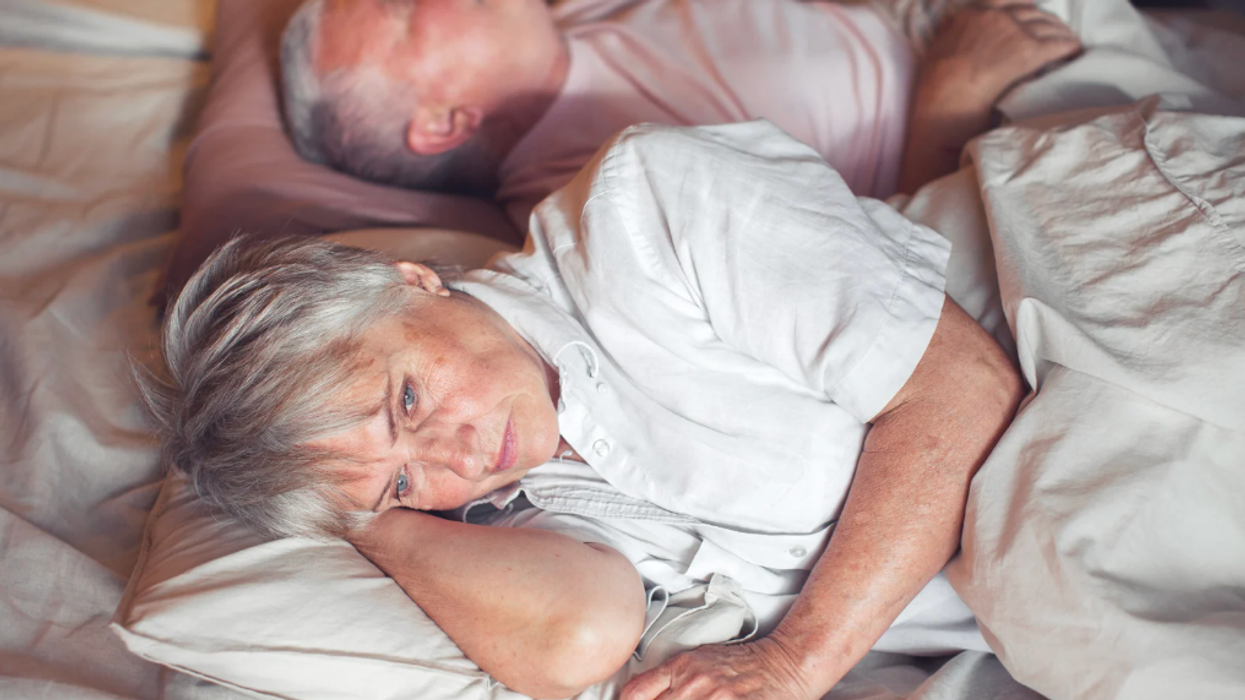We all want it, need it, and could probably use a lot more of it. Getting the recommended eight hours of shut-eye every night means spending a third of our lives sleeping, so it’s no wonder we’re obsessed with it. Companies have lunged on the opportunity to sell sleep, prompting all kinds of products ranging the gamut from foam pillows to inflatable hoodies. We recirculate myths all the time about turkey putting us to sleep and six hours a night being perfectly acceptable. As the sleep debate rages on, there are a few tried and true methods that will beat out the latest harebrained trend. Here’s what the experts have to say:
A Sleep Expert On Creating A Bedroom Oasis
We all know that eating a pile of street tacos after a night of heavy drinking never ends with a great night of sleep, but what about a single nightcap? Peter Fontaine, president and CEO of Epoch Sleep Centers, says it’s all about timing. Have that glass of wine with dinner, says Fontaine, but don’t bring another glass to bed with you. Drinking right before turning in for the night—even just one glass—can disrupt natural sleep patterns.
In this modern world, however, a glass of pinot might be the least of your problems. As Fontaine explains,
“If you think about it, the natural light we get from the sun is the only light we’ve had for years up until the early 1800s. So the brain is still in its infancy in relationship to the development of artificial light … especially blue light from computers and phones. (Blue light) causes melatonin—which is a natural sleep aid produced by the brain—to be suppressed if too much is introduced.”
Fontaine cites this overstimulation as the major cause of the modern sleep epidemic, a problem that leaves about a third of Americans sleep deprived. There are clear links between sleep deprivation and “a number of chronic diseases and conditions, including diabetes, cardiovascular disease, obesity, and depression,” the Centers for Disease Control and Prevention reports. In this sense, getting regular sleep isn’t just about feeling energized, but about taking control of your overall health as well.
Dr. Fontaine’s top tips for getting a restful night of sleep include sticking to a regular bedtime, taking a nighttime bath, setting your devices on silent, turning the lights down low, and avoiding negative material right before bed. In the same way parents don’t let kids watch scary movies right before bed, adults should follow their own advice if they want to sleep through the night. “Adults have the ability to not have nightmares or suppress it,” says Fontaine, “but many adults just can’t fall asleep after watching something negative.” Take it from someone who thought it was a good idea to watch Blackfish right before bed—stick to some optimistic reading instead. Fontaine calls these tips “sleep hygiene,” and we should all do our best to develop good sleep hygiene by reducing external stimuli in the hours before we settle into bed.
But what if you’ve tried every tip known to man and still nothing seems to work? At that point, Fontaine says, it might be good to consider having your sleep patterns studied by an expert. With many of his patients, the culprit is usually sleep apnea, which causes sufferers to repeatedly choke throughout the night. In cases of moderate to severe sleep apnea, medical intervention is required.
A Scientist On Creating The Perfect Formula For Sleep
Time named Hmbldt’s vaporizer pen one of the 25 best inventions of 2016 for good reason. The pens combine science, technology, and good design to deliver controlled hits of cannabis oil to relieve specific symptoms. Whether you’re looking to reduce pain, feel calm, or get a good night’s sleep, there’s a vape pen for that very purpose. Hmbldt’s Chief Science Officer, Samantha Miller, explained the complex process behind creating the perfect formula for sleep.
To address the variety of problems related to sleeplessness with one formula, Miller looked at combining THC, the psychoactive compound, with its nonpsychoactive cousin, CBD. For Miller, the choice to create a THC-dominant formula was an obvious one. CBD, while having excellent pain-relieving qualities, causes many people to experience alertness or wakefulness. Despite this surprising effect, CBD still has a big role to play in guaranteeing good sleep. As Sam explains,
“CBD helps prolong the effects of THC, so when we get to the problem of staying asleep or having the pain relief long enough so you’re able to get several hours of sleep, that’s where the balance of the CBD comes in. The balance was to find the right ratio between THC and CBD, so that you affect those things in the direction you want, but not overdo the CBD and have a wakefulness issue.”
Complement that ratio with a balanced terpene profile, and you have a winning combination for a good night’s sleep. After testing out seven different formulas, Miller and her team arrived at a perfect blend that helps more than 85 percent of consumers get a good night’s sleep.
Obviously, this process is a little more scientific than scouring Leafly for sleepy strains of cannabis. While loading up on Sour Diesel and smoking yourself to sleep might do the trick one night, there’s no guarantee you’ll have the same experience the next. The problem lies in organic variability, says Miller. As she explains,
“There’s a lot of variation even within one batch of flowers in terms of the terpene content and the cannabinoid content. So, from flower to flower you can have variation, and you certainly have more variation from batch to batch. It’s difficult to have a reliable and consistent experience.”
As with most medications, there is the possibility of building a tolerance over time, making cannabis less effective. To prevent that, Miller suggests mixing up your routine once a week with a different strain. “Every individual is a little bit different so it’s good to listen to your body and be aware of your experience,” says Miller, “You can make small adjustments that can really give you an overall successful wellness regimen on cannabis.”
A Narcoleptic On The Research We Still Need To Do
Product manager Morgan Cohn knows firsthand that all the tips in the world can’t help when you have a chronic sleep disorder. At first, she assumed she was your average insomniac—considering she had a difficult time falling asleep at night and would fall asleep during the day as a result. Doing a little bit of research for a college paper helped Cohn discover that she actually had narcolepsy, a sleep disorder that causes excessive daytime drowsiness. Some of the symptoms include hallucinations, sleep paralysis, excessive fatigue, and immediate REM sleep. While treatments often range from natural supplements and regular exercise to antidepressants and stimulants, researchers have yet to find a cure.
Finding a remedy is going to require not just diligent work from sleep scientists but awareness from the general public as well. As Cohn explains,
I don't think we understand enough about sleep disorders to cure any of them and, unfortunately, there really isn't really a lot of interest in sleep disorders like narcolepsy, especially since so many cases go undiagnosed.
So, if you’ve tried everything and your sleep troubles still keep you up at night, consider participating in a sleep study. You could be part of the solution to end chronic sleep disorders for good.

















 Pictured: A healthy practice?
Pictured: A healthy practice?


 Is solo sleep the best sleep?
Is solo sleep the best sleep?  Some poeple want their space, and some can't imagine being that seperate.
Some poeple want their space, and some can't imagine being that seperate. 

